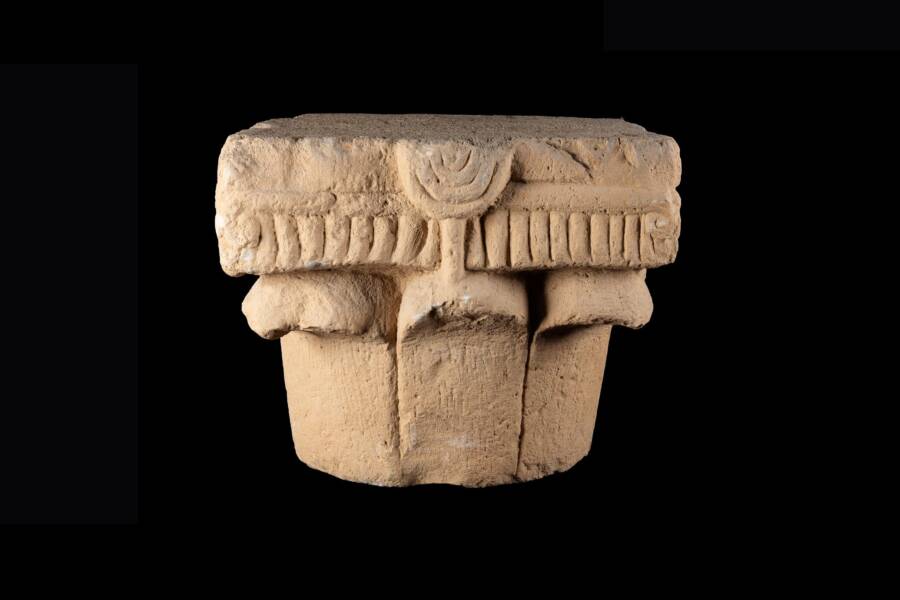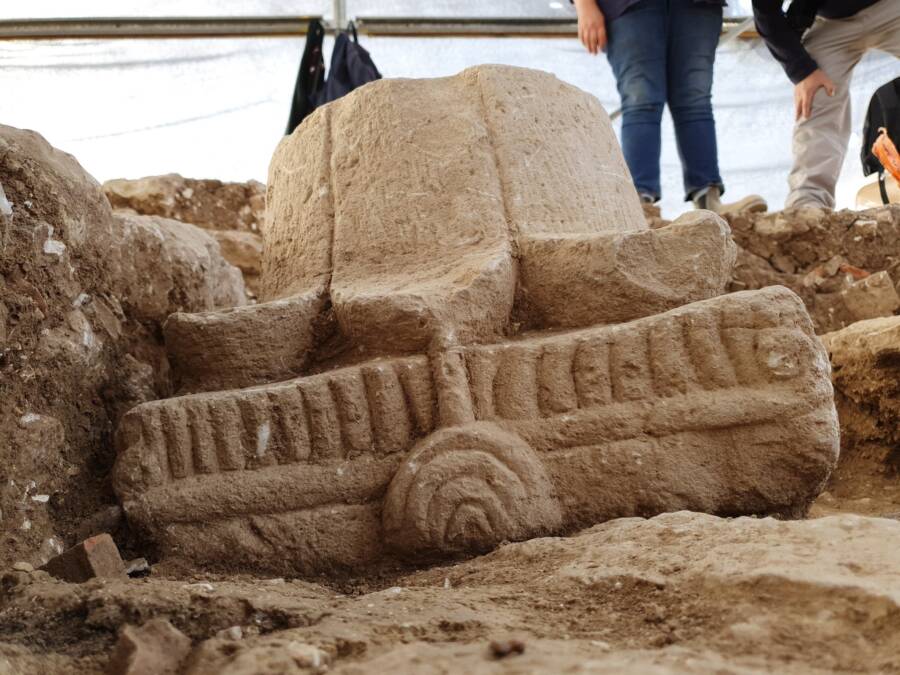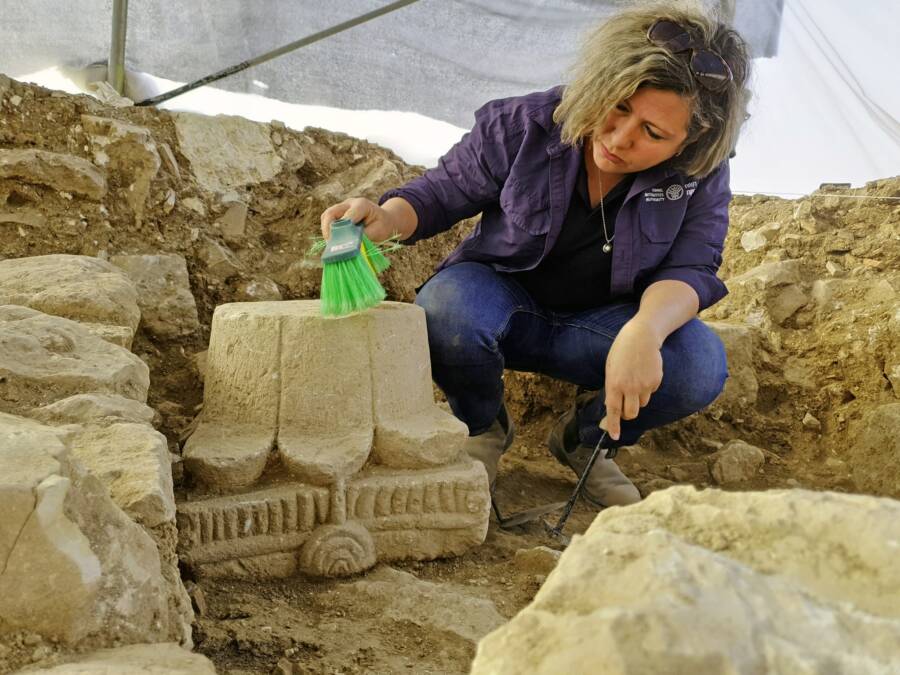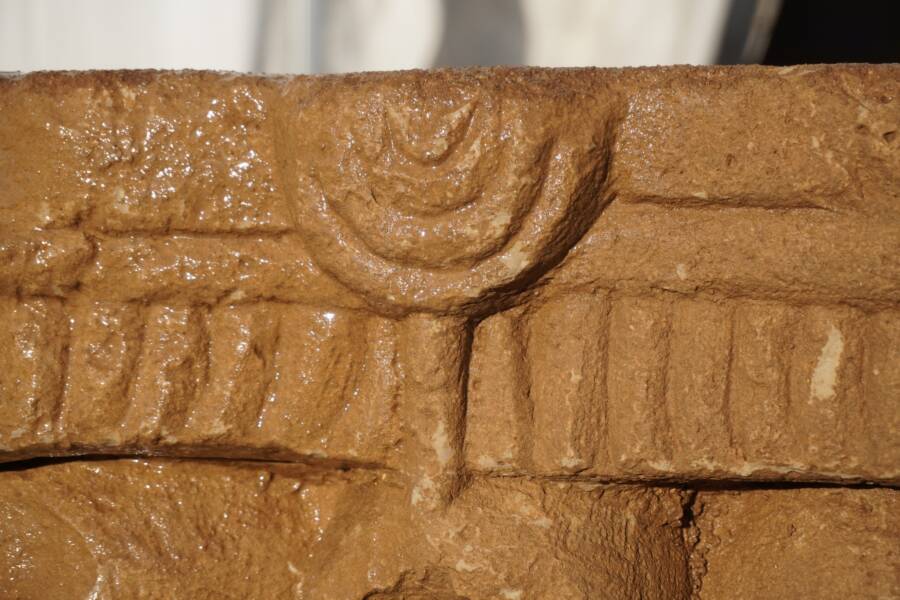Discovery of Mysterious Ancient Pillar in Jerusalem Could Rewrite History of the Menorah Symbol
Funny how history sometimes feels like a bad game of archaeological Jenga, right? Picture this: a hefty stone pillar head—tipped upside down and tossed into the rubble of what looks like a Byzantine building from the 6th or 7th century C.E.—just casually recycled as construction material. But wait, this isn’t just any old block of rock. Scholars reckon it might be sporting an image of a menorah, that iconic Jewish candelabrum. So here’s the kicker: this curious artifact probably started life at a Roman settlement over 1,500 years ago—or maybe even earlier at a Jewish site wiped out in turbulent times. How does a sacred Jewish symbol end up hitching a ride into Roman architectural hangouts and later get flipped on its head in a Byzantine ruin? It’s like a cultural mash-up wrapped in limestone, begging us to unravel its secrets. Archaeologists are buzzing—and rightly so—calling this a “rare” and downright “unparalleled” discovery. If stones could talk, this one might spill some serious tea about the past. Wanna dive deeper? LEARN MORE
The pillar head was found lying upside down in the ruins of a Byzantine structure from the 6th or 7th century C.E., and it was likely repurposed as construction material for this building.

Israel Antiquities Authority/FacebookUnlike anything unearthed before, this ancient pillar head has no “archaeological parallels,” according to the Israel Antiquities Authority.
During excavations on the outskirts of Jerusalem in 2020, archaeologists were surprised to find a stone capital — the top of a pillar or column — that seemed to be adorned with an image of a menorah. Archaeologists suspect that this pillar head was originally constructed at a Roman settlement at least 1,500 years ago, though it’s possible that it was created even earlier at a Jewish settlement that was later destroyed.
For now, many questions remain about this unique artifact, though archaeologists have some fascinating theories. In the meantime, experts are celebrating this ancient pillar head as a “rare” and “unparalleled” find.
The Discovery Of An Ancient Pillar Head That May Depict A Menorah In Jerusalem

Israel Antiquities Authority/FacebookThe stone capital as it was found in the field in 2020.
According to a Facebook post from the Israel Antiquities Authority (IAA), the limestone capital was first discovered in 2020, during excavations ahead of the construction of a new entrance to the city. It was found resting upside-down in a Byzantine-period building (from between the sixth and seventh centuries C.E., not long after the fall of Rome) but archaeologists suspect that it was moved from its older, original location, very likely an ancient Roman settlement.
Each of the capital’s sides on its upper section is decorated with an eight-branched “candelabrum” and each of its sides on its lower section is decorated with eight leaves.
But if this pillar head does depict a menorah, what was it doing in a Roman settlement?

Israel Antiquities Authority/FacebookIAA excavation manager Anna Eirich cleaning off the stone capital that may depict a menorah.
“It seems this capital stood atop a column in a magnificent building or on a street, in a late Roman period settlement here (second-fourth century C.E.),” excavation managers Dr. Uzi Ad and Anna Eirich stated in the IAA Facebook post. “From its local context and finds this settlement was apparently populated by descendants of Roman army retirees. If so, what was a capital with a menorah decoration on it doing here of all places – a distinct Jewish symbol? This is a true conundrum.”
Now, researchers have some guesses about how and why this mysterious ancient capital was first created.
The Larger Mystery Behind This Ancient Pillar Capital

Israel Antiquities Authority/FacebookA close-up of the possible menorah detail on the ancient stone capital.
According to Dr. Orit Peleg-Barkat of the Hebrew University of Jerusalem, who specializes in ancient architectural decoration, this capital is a remarkable artifact that “exhibits truly distinctive features.”
“Most significantly, the upper section — traditionally adorned with a floral motif — instead features what resembles an eight-branched menorah,” she explained. “This is particularly intriguing because seven-branched menorahs typically appear on capitals from synagogues of the late Roman and Byzantine periods, such as those found at Capernaum and Caesarea.”
She continued: “The absence of any evidence suggesting a synagogue at this site raises questions about the capital’s original purpose and context. It’s possible the craftsman intended to carve a conventional flower design but, due to his limited familiarity with standard models, created something that bears a resemblance to a symmetrical eight-branched lamp.”
Meanwhile, another researcher suggested that the capital may have once belonged to a Jewish settlement, and that its destruction was linked to the Bar Kokhba revolt of Judean Jews against Roman forces in the second century C.E.

















